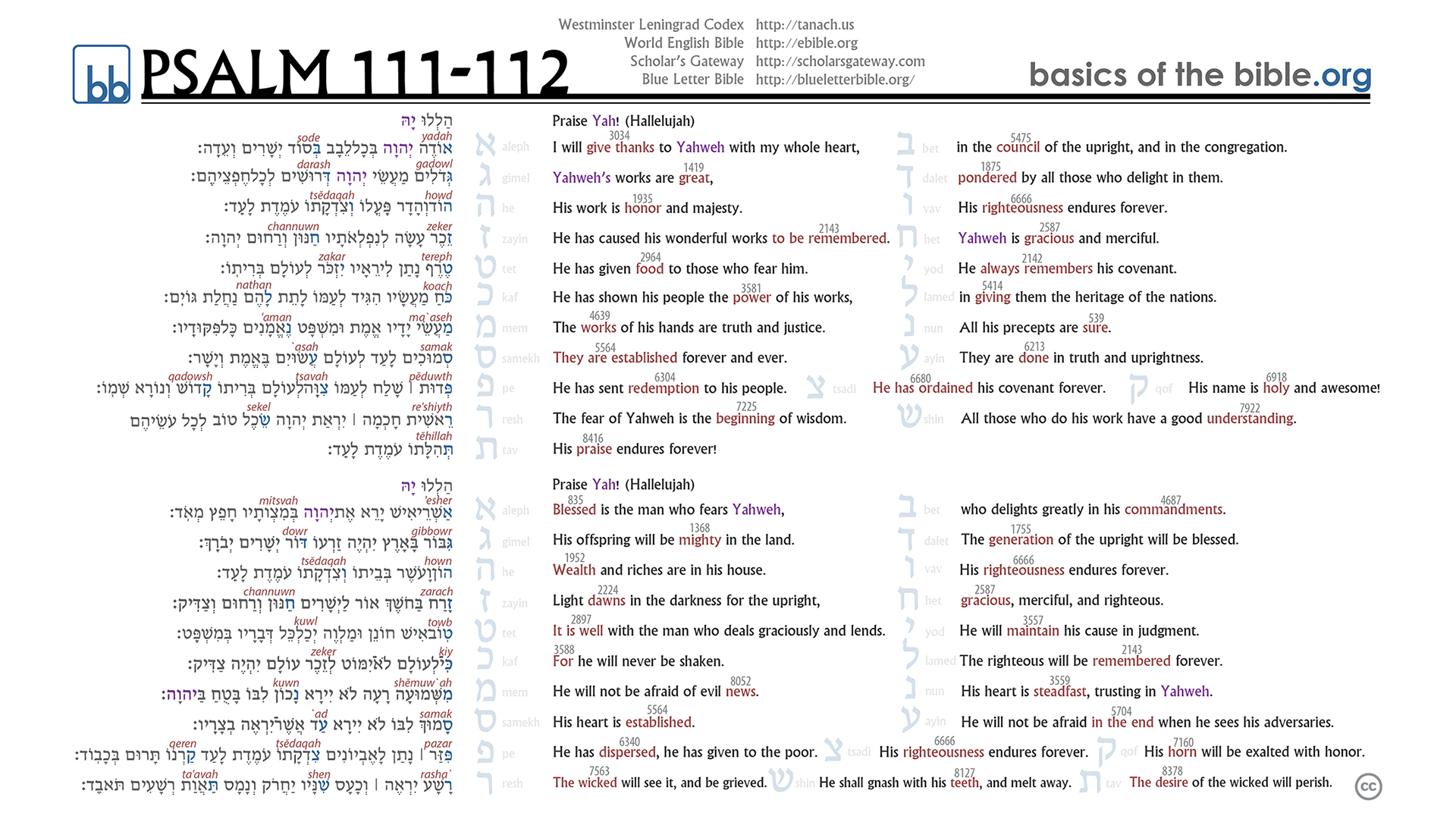psalm111-112

A visual representation of Psalms 111-112, acrostic psalms, in the original Hebrew (The Westminster Leningrad Codex) with English, using the World English Bible version.
Psalms 111 and 112 are acrostic poems (others acrostics in the Bible include Psalms 9, 10, 25, 34, 37, 111, 112, 119, and 145; Proverbs 31; and Lamentations).
An acrostic poem is one in which the first line of each stanza begins with a letter of the Hebrew alephbet (alphabet). The acrostic form is lost upon the reader when translated. Futhermore, the initial Hebrew word of each stanza is not necessarily the initial word when translated. Both psalms open with praise for the Creator God, hallelu Yah (lit. praise Yahweh). Both are complete alphabetic acrostics, having a successive letter of the Hebrew alephbet begin each phrase, organized in eight couplets (verses 1-8 in both psalms), and two triplets (verses 9-10 in both psalms), for a total of 22 lines, one for each letter of the Hebrew alephbet.
Brug observes that Psalm 111 extols the praises of Yahweh and the wisdom of following God, whereas Psalm 112 responds by describing the blessings received by those who follow Him.
In order to more fully appreciate the original structure of the psalm, the original Hebrew (Westminster Leningrad Codex) is shown line by line alongside the English translation (World English Bible). On the Hebrew side of the graphic, each initial letter of the acrostic is highlighted in blue, and a transliteration of the Hebrew is show above the inital word in red italics. On the English side of the graphic, the translated word that corresponds to the initial word in each stanza is highlighted in red (matching the transliterated word). The Strong’s Number is shown above the highlighted word in gray. The Personal Name of the Creator God in the original Hebrew is יְהֹוָה Yahweh, most often translated in modern English versions as LORD (all capitals), is highlighted in this graphic in purple. The other Hebrew word for the Creator God, אֱלֹהִים elohiym (most often translated in modern English versions as God), is not used in these psalms. Finally, the PDF version of the graphic contains hyperlinks to Hebrew root parser and Strong’s Numbers from Scholar’s Gateway and Blue Letter Bible, respectively, allowing the viewer to further study the meaning of each word of the acrostic.
References Brug, John F. Near Eastern Acrostics And Biblical Acrostics Biblical Acrostics And Their Relationship To Other Ancient Near Eastern Acrostics. NEH Seminar: The Bible And Near Eastern Literature, Yale 1987, 1997 edition. Strong, James. The New Strong’s Expanded Dictionary of Bible Words. Thomas Nelson Publishers, Nashville, Tennessee, 2001.
